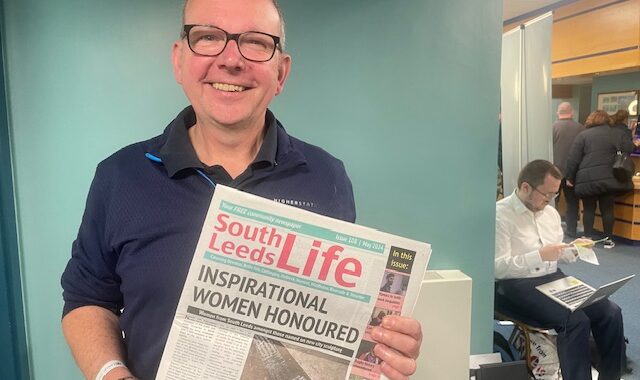A group of Welsh hyperlocal and community journalists from nine diverse publications took part in a unique experiment at the National Assembly for Wales last week. Working in partnership, Cardiff University’s Centre for Community Journalism (C4CJ) and the Assembly’s Communications team, ensured they were given access to all the day’s business at the Assembly; briefed by the four main political parties; introduced to all online information and invited to go anywhere they wanted to find and publish news stories which were important to their local community. Sara Moseley, Distinguished Visiting Fellow at the University who helped organise the day, explains how it came about and what happened.
How do democratically elected bodies become more accountable to those they serve, especially at a time when so may seem to be at best, disengaged? How can the issues discussed and debated be made accessible and relevant to people at a local level? And in Wales, how can the democratic deficit created by low levels of media coverage of the devolved legislature be tackled? This latter issue in particular has been a major theme for the National Assembly in Wales and for the Presiding Officer, Dame Rosemary Butler AM.
Research led by Prof Justin Lewis at Cardiff University’s School of Journalism Media and Cultural Studies highlighted some time ago the massive challenge facing the devolved Welsh institutions in getting their voice heard in a landscape dominated by London-based media. The decline in local newspapers and reduction in the numbers of reporters serving their on-line successors – described succinctly here by the BBCs James Harding – has contributed to the crisis.
However, the same digital technologies which have destroyed traditional newspaper business models have also enabled the emergence of a new sector. Hyperlocal and community news is created by and for communities of place and interest. Enabled by low cost publishing and distribution, this growing network is often performing a similar democratic function to traditional papers as new research from Cardiff University shows.
Taken as a whole, we know that this sector in Wales has an audience of many tens of thousands. Ofcom’s 2014 report News Consumption In The UK showed 10% are accessing community news online at least once a week – a rapidly growing number fuelled by the availability of news on-the-go via mobile devices.
We wanted to see what would enable these community based journalists, for many of whom this is a second job, to connect their audiences with the national law making body which also holds the elected Government of Wales to account.
Before the day itself, we made contact with all Assembly Members and with the main political party groups. Awareness and legitimacy is often an issue for hyperlocal journalists, so we wanted to let decision makers know of the opportunity to engage directly with constituents as well as pave the way for interviews and stories.
A list of the day’s business and links to online information on how the Assembly and its Committees work was made available. Who knew, for instance, that it only requires 10 people to sign a petition for it to be discussed? Or that clips from Plenary and Committee Meetings can now be embedded from Senedd TV into any digital publication?
Committee business on the day ( Thursday 23 October) included fuel poverty and energy efficiency (Environment Committee); the budget for the Welsh language (Communities Equalities and Local Government); The Chief Medical Officer’s annual report highlighting issues such as obesity (Health and Social Service). And more. All of it capable of being broken down and applied at local level. Hardly any of it covered by the mainstream media.
Based in the Pierhead Building next to the Assembly, about 25 journalists from nine publications were welcomed by the Presiding Officer, who championed this initiative, and were very quickly briefed by press officers from the main parties.
The Liberal Democrats focused on pupil deprivation grants, applied to each child and important in many more deprived communities; Plaid Cymru on community assets. These two stories, tailored for the audience, proved to be the most relevant as the day wore on. The Conservative’s pursuit of a very negative line on the Welsh NHS and the row that had developed between UK and Welsh Governments, the least.
A quick morning meeting, convened by Prof Richard Sambrook, showed that every publication had good local stories to pursue. Over the next three hours AMs and the Welsh Language Commissioner came and went as they were interviewed or popped in to meet journalists from their community. Emma Meese, from C4CJ, was on hand to help with filming and editing where this was needed and stories produced there and then were posted online.
The Twitter wall was abuzz through the day. By the time it came for a wash-up with panel members including the AM Peter Black, a few things has become clear:
- The Assembly is a very rich and almost wholly untapped source of stories and information of direct relevance to communities;
- More can be done to connect AMs and hyperlocals – largely through better information and understanding, perhaps through more enabling work like this;
- For those wanting to engage, the focus should be on what is relevant at a community level rather than what they feel needs to be broadcast.
- Experiments like this are a start to what could be a process of closing the democratic deficit.
- More needs to be done to find out how more and better community coverage of and engagement with some of the most crucial decision-making can be enabled.
Over the next few months, we will be analyzing content published as a result of the day and comparing this with what appeared in the mainstream media. We want to see whether otherwise unreported stories were unearthed. We’ll try to look at the reach of these stories too.
We’ll be going back to everyone who took part to see whether this was the start of different coverage and relationships between hyperlocals and AMs. A report will be published by the National Assembly suggesting how they can become permanently more open to community media, informed by what happened on the day. And, who knows, we might do it again…
Hyperlocals involved in the day:






